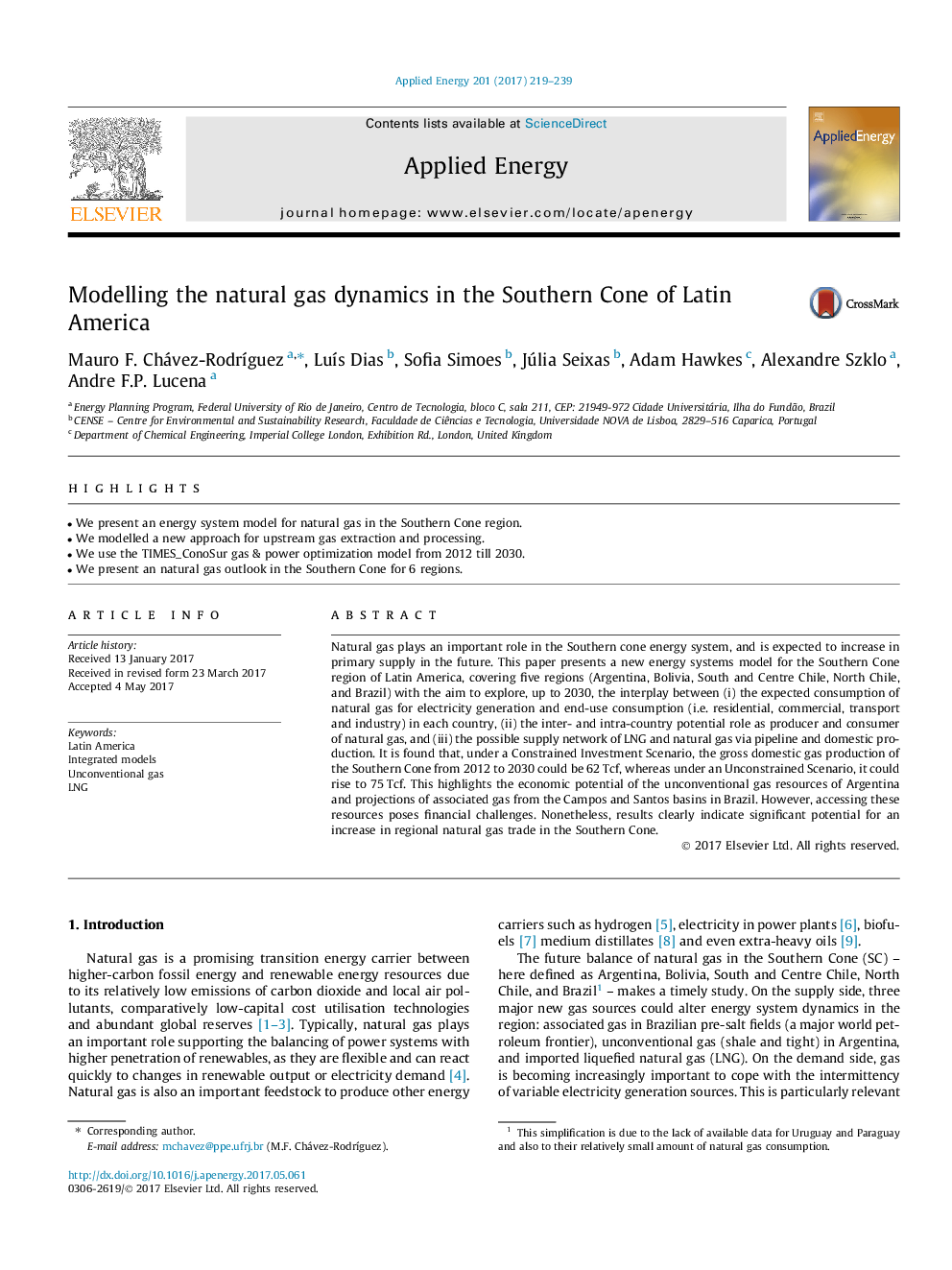| Article ID | Journal | Published Year | Pages | File Type |
|---|---|---|---|---|
| 4916014 | Applied Energy | 2017 | 21 Pages |
Abstract
Natural gas plays an important role in the Southern cone energy system, and is expected to increase in primary supply in the future. This paper presents a new energy systems model for the Southern Cone region of Latin America, covering five regions (Argentina, Bolivia, South and Centre Chile, North Chile, and Brazil) with the aim to explore, up to 2030, the interplay between (i) the expected consumption of natural gas for electricity generation and end-use consumption (i.e. residential, commercial, transport and industry) in each country, (ii) the inter- and intra-country potential role as producer and consumer of natural gas, and (iii) the possible supply network of LNG and natural gas via pipeline and domestic production. It is found that, under a Constrained Investment Scenario, the gross domestic gas production of the Southern Cone from 2012 to 2030 could be 62Â Tcf, whereas under an Unconstrained Scenario, it could rise to 75Â Tcf. This highlights the economic potential of the unconventional gas resources of Argentina and projections of associated gas from the Campos and Santos basins in Brazil. However, accessing these resources poses financial challenges. Nonetheless, results clearly indicate significant potential for an increase in regional natural gas trade in the Southern Cone.
Related Topics
Physical Sciences and Engineering
Energy
Energy Engineering and Power Technology
Authors
Mauro F. Chávez-RodrÃguez, LuÃs Dias, Sofia Simoes, Júlia Seixas, Adam Hawkes, Alexandre Szklo, Andre F.P. Lucena,
